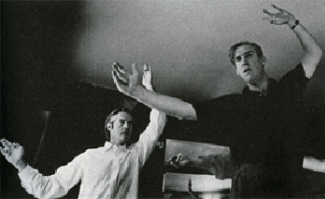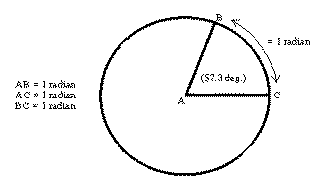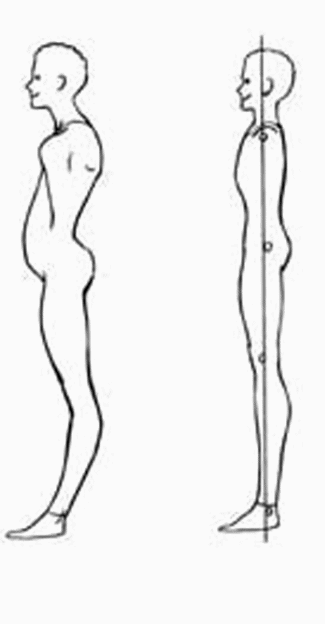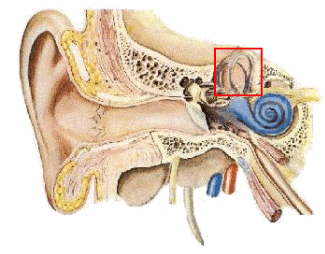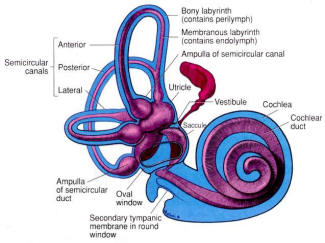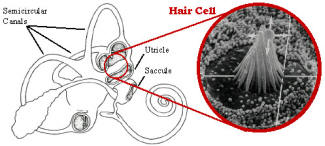THE MATERIALIST MANIFESTO by Charles Carreon
February, 2004
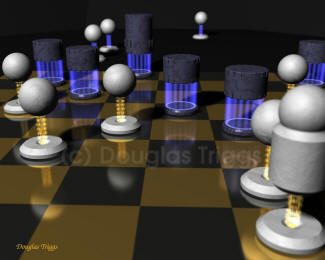 The Materialist Manifesto, Part 1:
The Materialist Manifesto, Part 1:The word "manifesto," according to Merriam-Webster.com, has been in current use since 1647, and means "a written statement declaring publicly the intentions, motives, or views of its issuer."
In the year 1647, the following things occurred in English history:
• Charles I fled to Scotland following his defeat in 1645.
• On August 6, Cromwell led the New Model Army into London and took control of Parliament.
• The Levellers sought the abolition of the monarchy and social reform leading to equality among people. The Leveller philosophy was popular among the lower ranks of the New Model Army and a catalyst for revolt in the summer of this year.
One can presume that the manifestos were flying hot and heavy in those days. Manifestos are the sort of literature suitable for pamphleteering and other distribution on the cheap. Hot words, cranked out quick, consumed by the masses to fire their brains. Surrealists had manifestos, presumably outfitted with fiery denunciations of nothing and everything. Tantrics have manifestos, in which they refute everything and nothing. Material Buddhism must have its own manifesto. So here goes.
To say "materialist" is necessarily to sneer at the person so described. They are bad ab initio, unworthy of love or appreciation, guilty of valuing things more than people. They deny the existence of the mind's deathless nature, and spread the heresy of this-life-only. They fall into self-indulgent pleasure, or into abysses of depression and despair. No one would want to be a materialist.
Be it clear henceforth that Material Buddhism has nothing to do with these straw men, and stands on the solid footing of real experience. The sword of Manjusri is the sword of empirical perception, distinguishing that which exists from that which does not exist. The mind exists, as does the body that provides the foundation for its appearance, as does the universe that provides the environment for the body. Every thought, perception, notion, emotion, mood or illusion exists as an event that resonates in the web of being.
Why the slam on materialism? Remember George Harrison's album after he went Hare Krishna on us? "Living in a Material World." The way Harrison sang it, it was a curse, a back-breaking drag to live in a material world. With his twangy guitar turning soulful to woeful, he spun out two disks of material, and impressed the cover with a palm-print with Kirlian aura -- a chilling foreshadowing of the use of biometric scanning. The blue handprint had the effect on the mind of patterning your psychic palm, making you feel stuck to the image, imprisoned by having a hand. Downright scary when you think about it. You couldn't argue that you don't have a hand. Therefore you are material. Therefore George is right -- you live in a material world. So let's cry along with George and sell incense for Swami Prabuphada. And dance our way out of this dreadful material world. Of course, George never transcended the material illusion enough to give away all of his money, did he?
But he can't be blamed. He was just another person who found it easier to believe something absurd than to accept the evidence of his senses. Like a madman who gets an electric bill he can't pay, and convinces himself that the government or Wayne Newton perhaps, is going to pay it. That's how a nice boy from Liverpool ends up believing that a fried-food addict like Prabuphada has the true teachings of life, and God is a sexy blue flute-player who screws milkmaids to pass the time in his endless frolicsome existence of total bliss. George funded publication of numberless full-color volumes of Prabuphada translations of classic Hindu religious texts. All indications were that he was a "sincere devotee" of Lord Krishna, Lord Caitanya, Lord Rama, all the magnificent incarnations of Vishnu.
Prabuphada, a 70-year-old retired Indian pharmaceutical executive, arrived in New York in 1965, and sold fundamentalist Hindu Vaishnava doctrines to disaffected flower children and acid burnouts, offering people too cool to believe in Jesus an alternative, but still very concrete God in His heaven, plus rigid male-female roles, for that comforting feeling of being just like mom and dad. Eventually, the cult became involved in drug dealing and murder so lurid it fueled a true crime book, "Monkey On A Stick," an expose of the drug killings at the palatial West Virginia temple that was the cult's crown jewel:
MONKEY ON A STICK wrote:
"Shoot him!" Drescher screamed at Reid. "Shoot him!"
St. Denis was hit twelve times. He crumpled and went down. But then, almost immediately, as Reid and Drescher watched in amazement, he struggled back onto his feet and half staggered, half ran back down the path toward the Blazer.
Drescher dropped his gun, ran after St. Denis, and dove into him, hitting him behind the knees. The big man went down. Drescher rolled him over and climbed onto his heaving chest.
"Get a knife!" Drescher yelled at Reid.
Reid felt like he was going to vomit. For an instant he thought about running away, but he was afraid if he did, Drescher would come after him and kill him, too. He ran into the cabin and came out with a kitchen knife.
"Chant!" Drescher was screaming. "Start chanting!"
Drescher thought he was doing St. Denis one last favor. Krishna had preached, "Those who remember me at the time of death will come to me. Do not doubt this." By forcing St. Denis to chant, Drescher thought he was guaranteeing him a more spiritual life in his next incarnation.
Drescher grabbed the knife and stabbed St. Denis. Again and again. Hard and deep. Finally, the blade hit a rib and snapped.
St. Denis fought on, shrieking in agony, coughing blood, and gasping for breath. Reid found a hammer and Drescher hit him with that, punching a one-inch hole in his skull. St. Denis went limp.
Drescher and Reid dragged St. Denis down the logging road to the dammed-up stream. They dumped the body on the swampy ground. Reid picked up one end of a plastic sheet, about to wrap St. Denis's head in it, when the big man opened his eyes.
"Don't do that, you'll smother me," he said.
Reid screamed—a long, piercing scream of pure terror.
Well, it certainly was a clumsy murder ritual, especially compared with the undoubtedly austere and impressive murders of the four Dalai Lamas whose lives were snuffed out before they assumed worldly authority. That would be the 9th, 10th, 11th and 12th. I mean, stabbing people to death while telling them to chant mantras might be one way to help others practice Dharma, but I go for less drastic methods. And all because he wouldn't give a big enough donation! Apparently that was St. Denis' sin -- he wanted to open a flower shop with his wife's inheritance instead of giving it to the "temple." And you thought God spurned coerced offerings!
But why am I starting off here talking about murders, of Dalai Lamas or American Hindus? You thought I was going to give you a materialist manifesto. Well I am, but I'm also following the historic precedent of Lucretius, who at the outset of his "On the Nature of the Universe," described the murder of Iphiginea, the virgin princess, a "sinless sacrifice" to nonexistent gods, to obtain a favorable wind for the Greek fleet, departing to make war upon Troy:
LUCRETIUS wrote:
Raised by the hands of men, she was led trembling to the altar. Not for her the sacrament of marriage and the loud chant of Hymen. It was her fate in the very hour of marriage to fall a sinless victim to a sinful rite, slaughtered to her greater grief by a father's hand, so that a fleet might sail under happy auspices. Such are the heights of wickedness to which men are driven by superstition.
The use of religion as a flag of deception, flown by scoundrels to conceal their low intentions, is so well-established a practice as to justify simply overthrowing the presumption that religious persons are good persons. We are so likely to be led astray when we take leave of empirical landmarks, so likely to have our faith used and abused when we accept any close-ended doctrine offered by a know-it-all believer, that the practice of believing in unverified things can safely be condemned as contrary to all sense.
Lucretius, however, does not rest his argument with the negative. He knows that people will not discard superstitious beliefs simply because occasionally someone will kill a princess for a trivial reason. The only way to "dispel the dread and darkness of the mind" is "by an understanding of the outward form and inner workings of nature." Why is this? Because, at bottom, all superstitious explanations explain life in a distorted fashion. Instead of learning what the world truly is, the superstitious embrace nonsensical beliefs because of prejudice. They cannot abide the notion that death separates us from our loved ones utterly, so they carve out a belief in the afterlife. They cannot abide the notion that the cruel prosper and the humble suffer, so they carve out future lifetimes in which the balance will be redressed. Then a fairy-tale backdrop is painted in, with gilded highlights, and the pious equivalent of canned laughter -- canned piety -- is spread all over, and in hushed tones the absurd doctrine is consumed with the solemnity of a host proffered by a priest.
Truth, Lucretius knew, is discovered only after one makes up one's mind to discard all superstitious notions. Then one is free to begin the enumeration of the obvious. Lucretius' discoveries flow fast and free, one upon the other, after he declares his intent. The world is all material and the space in which it exists. Nothing can be accounted for except by its concrete character. All things are made of matter, which can however be spun to levels of great fineness. Mind is the finest of all matter, composed of infinitely subtle, smooth and small spherical particles that are set in motion by the slightest stimulus. Mind is connected with heat and breath, and leaves the body at death. Life infuses the blood, and its departure from the body causes death. The heart is the center of life, and a wound that goes to the heart is fatal. So much Lucretius reveals for us. Where Jesus cast the moneychangers out of the temple, Lucretius cast the soothsayers and oracles out of our minds. He shows that their explanations, prophecies, remedies, cures, invocations, and promises mystify matters while claiming to make them clear. We are human beings. There are no gods. The mountains, thunder, wind, rain, fire, and all of the appearances of this world are the proper subjects of our curious mind. To fantasize a cast of characters operating our world behind the scenes is to think like a child.
Do you want to think like a child? Do you want to be hiding under the blankets of your bed, afraid that terrors lie in wait for you? Do you want to waste this life fearing an afterlife that does not exist? Can you convince yourself that you have, in a billion-to-one shot, found the one true dogma that has ever blossomed on this earth? Lucretius will only cluck his tongue and take your example as proof that good sense is the rarest thing on earth.
Was Lucretius right in all things? Of course not. His speculations miss the mark here and there, but never on this point -- he never explains the actions of inanimate things by imputing karmic purposes, such as retribution or reward. Lighting never strikes the evil because they are evil. Lighting strikes for the same reason every time. This is the no-consolation, unappealing side of true materialism. Living without fantasies means no more imaginary joys, no more imaginary flights from real pains. But to lose a false consolation that obstructs true understanding is actually a benefit. By surrendering superstition, we amputate a dead limb that has no value. By discovering new truths, we lay the foundation for future discoveries that will be even more true and comprehensive. By remembering that there is always more to learn, we eliminate any possibility of reaching a final conclusion, so we can never suffer boredom. By knowing that to know all is simply a fantasy, we are not troubled by despair over our limited understanding. By accepting the limitations of our understanding, we become conscious of how unlimited is the realm of the knowable. By fully exploring what we can know, we are always thrilled by the vast expanse of the unknown and the unknowable.
The Materialist Manifesto, Part 2:Lucretius' First Principle was this: Nothing is ever created by divine power out of nothing. Since I am not worthy to step ahead of Lucretius in line, I will take this for my own first principle, after restating it in the affirmative as the Law of the Conservation of Matter and Energy: The sum total of matter and energy in the Universe is constant. Quick research on the Net tells me that the post-Einsteinian formulation is: "...Energy may be transformed from one form into another but is neither created nor destroyed..." This accommodates our post-Lucretian realization that matter is a complex assemblage of energy and particles that break down into further assemblages of energy. However we express it, the First Principle will give us "... a clearer picture of the path ahead, the problem of how things are created and occasioned without the aid of the gods."
Since he did not have a cyclotron or an electron scanning microscope, Lucretius disproved the theory that things are generated from nothing by applying the common understanding of his day that living things arise only from their parents, which share the characteristics of their offspring. Thus, "each is formed out of specific seeds, it is born and emerges into the sunlit world only from a place where there exists the right material, the right kind of atoms. This is why everything cannot be born of everything, but a specific power of generation inheres in specific objects."
As soon as we make room for the miraculous occurrence of events outside the laws of nature, we violate the structure of our honest understanding. It is as if we were to say, "One and one make two unless God chooses to show us otherwise." The existence of the exception destroys the value of the rule. We will need to develop a list of circumstances under which God requires one and one to be more or less than two. Perhaps our first entry will be the Miracle of the Loaves and the Fishes told in Matthew.
Let's begin there. The believer's understanding is that one boy's lunch turned into a feast for the multitudes as an expression of Christ's divinity. As a child, this story disturbed me. If this were true, why could all scarcity problems not be alleviated through faith? While we always prayed grace over our meals, this never made one steak into two, or a dozen tortillas into thirteen, much less twelve-hundred. Today, I adhere to the First Principle, and know that there must be another answer.
What happened was this. The crowd was on the cusp of leaving or staying. Many were saying that they were hungry and had no food, so they had to leave and eat. But if you've ever traveled in Asia, you know that actually, in amongst their baskets, clothing, etcetera, there was water, fish and bread. It's not like there was a kosher McDonald's that they figured they'd hit on the way back from the lecture. Many people had food, but no one wanted to reveal it, because they thought they would have to share and be left without enough for their children. But when one young fisherboy said, "Here, I have more than enough, and I can go get more," Jesus seized the opportunity to speak out, making an example of the boy's faith. Faith in what? That Jesus could make more food? Surely not. Faith that he could afford to share, to miss a meal, to run down the beach and find more fishermen with extra fish. Pretty soon, everyone started unpacking their little stashes of food and water. They started sharing. Nobody left. They had a feast, and afterward Jesus was able to tell them "See, you can do it. You don't have to be animals driven by hunger and stupidity to hoard food."
Now, not only is the lesson derivable from this re-understood Jesus story more plausible, it is also more useful to people faced with hunger or other forms of scarcity. You could tell a group of starving aboriginals to pray to God, tell them the story of Jesus and loaves and fishes, and watch them die as surely as if they'd drank Jim Jones' Kool-Aid, but while that would be a testament to your ability to sell the aboriginals a raft of bullshit, and they would presumably all go to heaven, as a member of the aboriginal group, I would object to this result. Particularly if you jumped in a truck after giving me your pious lecture and went back to the USA to eat KFC.
Whence comes my take home lesson for examining your beliefs: "Put your mouth where your money is." In other words, if you don't solve hunger by prayer when you are hungry, then don't tell yourselves that you can. If you buy food at the store that comes from a truck that came from a warehouse that was filled with food by the efforts of farmers and fishermen and cattle ranchers, then give them the credit. Blow the smoke out of your head and appreciate the way things really are.
So I conclude Part II of this Materialist Manifesto. May you have a real day.


